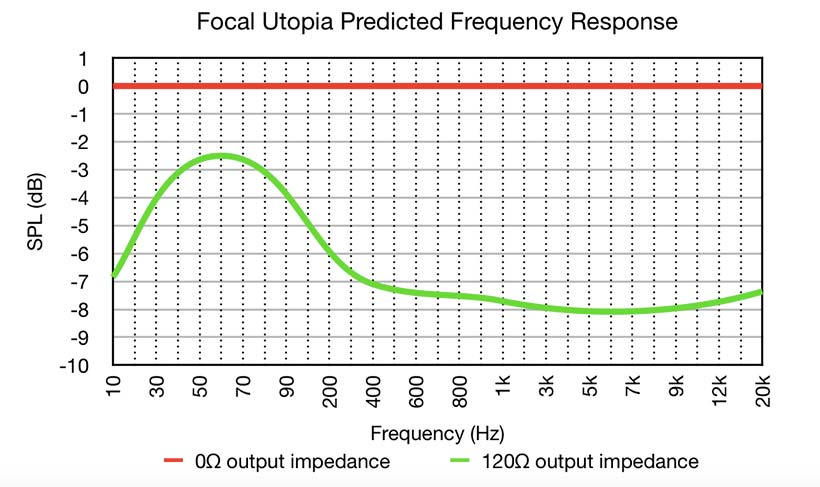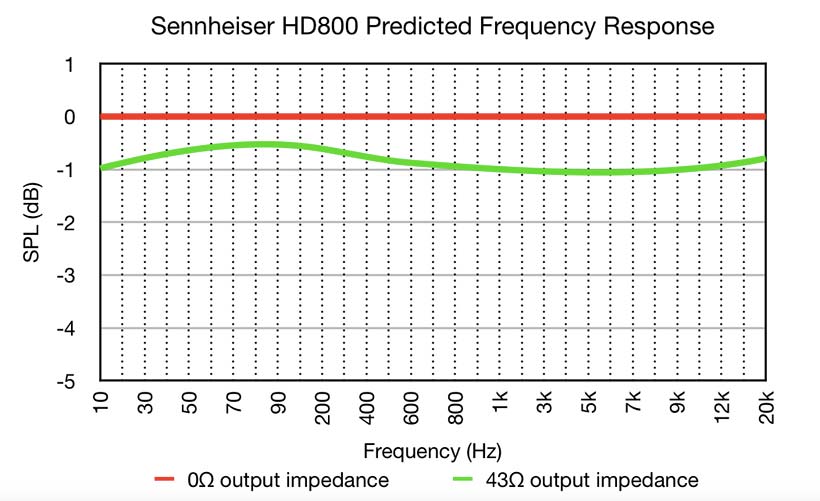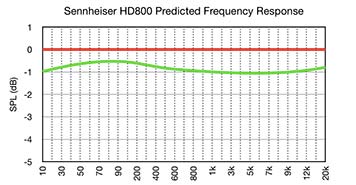Richard Barclay concludes his explorations in the deep waters of headphone tech with an investigation into what really counts in a headphone amplifier. As a headphone is essentially a miniature loudspeaker, it shouldn’t be surprising that the interactions between headphones and headphone amplifiers are very similar to those between loudspeakers and power amplifiers. Many of us have hopefully developed a pretty good knack for selecting appropriate amplification for our loudspeakers and vice versa, but how confident are we in our abilities to do this for our headphones?
There are many design variables that affect the performance and perceived synergy of such pairings – not to mention individual taste – so we cannot simply reduce things to a few quantifiable specifications. There are however three attributes that play an important role in the matchmaking process and these are often responsible for explaining some of the sonic differences heard between various headphone and amplifier combinations. I discuss each of these in turn in a trio of articles on output power, gain and output impedance.
Output Impedance
I explained in my previous article on Output Power that output voltage remains constant across a headphone’s impedance curve while current draw varies, assuming the amplifier is an ideal voltage source with zero output impedance. In reality, no amplifier is an ideal voltage source; they all have some degree of output impedance, that is an opposition to current flow into the connected load. Output impedance is the measure of the amplifier’s tendency to drop voltage when the load draws current, and is another important consideration when evaluating a headphone amp’s suitability for a particular headphone.

Where VS is the amplifier’s voltage output, ZS is the amplifier’s output impedance, I is current flow, ZL is load impedance and VL is the voltage that’s actually delivered across the load. If the output impedance is not zero, the amplifier’s output voltage is reduced when a load is connected. The higher the output impedance, the greater the drop and thus lower the voltage delivered across the load:

Loudspeaker owners are probably more used to seeing amplifier output impedance expressed as an electrical damping factor. Damping factor is simply the ratio of load impedance (ZL) to amplifier output impedance (ZS), and one can be derived from the other as follows:


Whenever a damping factor is quoted, an assumption is being made about the load impedance. This is important because a change in load impedance will change the damping factor. In the context of power amplifiers for loudspeakers, the nominal load impedance is usually assumed to be 8Ω, so using 4Ω loudspeakers will halve the quoted damping factor, while using 16Ω loudspeakers will double it. As there is such a wide range of headphone nominal impedances – typically anywhere from 16Ω to 600Ω – it makes more sense for headphone amplifier manufacturers to simply specify the output impedance, from which the user can calculate the damping factor with their particular headphone. It should be noted that this damping factor is representative only at the transducer’s nominal impedance. For loudspeakers and headphones whose impedance varies with frequency, the proportion of voltage dropped will vary across the transducer’s impedance curve.
An amplifier’s output impedance can also vary with frequency. In solid state amplifiers it is typically lowest at low frequencies and begins to rise as frequency increases, though the rise is often negligible for the most part and may not be noticed until the highest audible frequencies are reached. In valve amplifiers the variance in output impedance can be much greater and it is not uncommon for it to be highest at both frequency extremes within the audible range. As it is impossible to measure an amplifier’s output impedance curve without specialist equipment, we will proceed upon the assumption that the single value published by the manufacturer is representative across the amplifier’s audible frequency range.
Effect on output power and gain
If a headphone amplifier’s output impedance is close enough to zero to be a significantly small fraction of the load impedance, we can effectively ignore it and have confidence in the predictions we made in the articles on Output Power and Gain. If however there isn’t a sufficiently high damping factor between amplifier and headphone, the predictions made previously may no longer be valid. Let’s demonstrate this with a headphone amplifier that has a hypothetical 10Ω output impedance:
1) Partnering this amp with a headphone that has a flat (i.e. constant) impedance curve of 100Ω achieves a damping factor of 10. Using the voltage drop formula introduced at the start of this article, this headphone receives 0.909x (nearly all) the amplifier’s output voltage to produce any given frequency.
2) Swapping the 100Ω constant impedance headphone for a 10Ω constant impedance headphone reduces the damping factor from 10 to 1. This headphone receives only 0.5x (half) the amplifier’s output voltage to produce any frequency.
Example 1) is unlikely to have significant adverse consequences as the amplifier’s voltage output capability before clipping is only being reduced by 9%. Recalling the gain formula used in the previous article, dB gain or loss = 20 x log10 (voltage multiplier), this equates to -0.8dB loss of power and gain.
Example 2) will have a more significant impact as the amplifier’s voltage output capability before clipping is being halved, which equates to -6dB loss of power and gain.
Effect on frequency response
Because the headphones in the two examples above have flat impedance curves, the voltage loss applies equally to all the frequencies the headphones are asked to produce. The headphones’ amplitude frequency responses should therefore remain unaltered.
3) If, however, we swap the constant impedance headphone for a headphone whose impedance curve varies from a minimum of 10Ω to a maximum of 100Ω, we now get a damping factor that varies between 1 and 10. This headphone receives 0.909x the amp’s output voltage to produce the frequencies that are 100Ω impedance but only 0.5x for the frequencies that are 10Ω impedance.
Example 3) will have the most audible impact because the loss of output voltage is not equal across all frequencies, thus tonal colouration will occur. Put simply, the headphone’s amplitude frequency response will follow its impedance curve. In this particular example, we expect to hear a difference of as much as 5.2dB between the frequencies that are 100Ω impedance and those that are 10Ω impedance; 5.2dB being the difference between -0.8dB and -6dB or 0.909x and 0.5x output voltage.
Output impedance is therefore important because it not only reduces an amplifier’s gain and power delivery into a transducer but can also cause tonal colourations by attenuating the amplitude frequency response in a non-linear way. Non-linear changes in amplitude frequency response also affects phasing, which in turn can alter the way in which spatial information (i.e. image and soundstage) is presented and perceived.
Diminishing returns
The voltage drop and resulting sonic colouration reduces as the damping factor increases, doing so in diminishing fashion. The reduction in voltage loss and colouration is more significant when the damping factor is doubled from, say, 1 to 2 than when it’s doubled from 10 to 20. Let’s demonstrate with two further examples:
4) Halving the amplifier output impedance in Example 3) from 10Ω to 5Ω doubles the “variable damping factor” with our 10Ω-to-100Ω variable impedance headphone from between 1 and 10 to between 2 and 20. The headphone now receives 0.952x the amp’s output voltage to produce the frequencies that are 100Ω impedance and 0.667x for the frequencies that are 10Ω impedance, resulting in losses of -0.4dB and -3.5dB respectively. The difference in output level between the frequencies that are 100Ω and those that are 10Ω reduces to 3.1dB, which is 2.1dB less variation than in Example 3).
5) Halving the amplifier output impedance again from 5Ω to 2.5Ω doubles the “variable damping factor” from between 2 and 20 to between 4 and 40. Our 10Ω-to-100Ω variable impedance headphone now receives 0.976x the amp’s output voltage to produce the frequencies that are 100Ω impedance and 0.8x for the frequencies that are 10Ω impedance, resulting in losses of -0.2dB and -1.9dB respectively. The difference in output level between the frequencies that are 100Ω and those that are 10Ω reduces to 1.7dB, which is 1.4dB less variation than in Example 4).
Table of damping factors
The following table summarises the maximum sensitivity losses (and thus maximum potential frequency response deviations) to be expected from different damping factors. It assumes a headphone’s minimum impedance is close in value to its nominal impedance:

Modelling
While simplified, Examples 1) to 5) show that, if we know the impedance curve of the headphone and output impedance of the amplifier, we can model the extent to which the voltage drop affects the headphone’s sensitivity at any given frequency.
6) Let’s model the Focal Utopia, whose impedance curve has been measured and published on several headphone enthusiast sites:

From this impedance curve we would expect Utopia’s tonality to become increasingly bassy as amplifier output impedance is increased. Let’s assume, rightly or wrongly, that Focal designed Utopia to deliver its intended tonal balance with 0Ω output impedance. Since all frequencies receive maximum voltage equally with 0Ω output impedance, Utopia’s “intended frequency response” is represented for simplicity by a flat red line with no sensitivity losses and thus no frequency response deviations. If we increase the output impedance to 120Ω, the frequencies at 360Ω receive 0.75x the amp’s output voltage (-2.5dB loss) while the frequencies at 80Ω receive just 0.4x (-8dB loss). The green curve shows the extent to which the sensitivity is reduced at different frequencies. In essence, we get a big +5.5dB bass hump centred at 60Hz, a gentle +1dB ramp across the lower mids, and a small +0.5dB treble lift above 12kHz:

Is high output impedance useful?
The discussion thus far implies that: 1) output impedance is an undesirable feature that has only negative consequences for amplifier-headphone performance; and 2) the lower the headphone’s impedance the lower the amplifier’s output impedance should be. While this may be true in so far as a higher damping factor allows the amplifier to output more of its power to the headphone and with lower distortion, it ignores not only the possibility that some listeners may prefer the sonic effects of a high output impedance, but also that it may even be key to delivering the headphone designer’s intended performance. Put another way, why should we automatically assume that all headphones sound best with 0Ω output impedance?
Output impedance evolution
Until relatively recently, high headphone amplifier output impedances were the norm; 120Ω was typical but sometimes impedances as high as 400Ω were encountered. Headphones were driven from the headphone output of stereo amplifiers and receivers; this was most often a direct tap from the loudspeaker outputs passed through a group of resistors to attenuate the signal to achieve a lower noise floor, gain and output voltage more appropriate for ‘phones.
Headphone designers compensated for this by specifying drivers with high impedance voice coils that would be appropriately damped by the amp’s high output impedance. 600Ω ‘phones were prevalent in that era but some, like the original generation Sennheiser HD414, were as high as 2kΩ. (FYI – Plugging the 80Ω Focal Utopia into a vintage amp with 400Ω output impedance drops the output voltage across the frequencies with lowest impedance to as little as 0.17x and results in an enormous +15.5dB bass boost!).
The proliferation of portable digital audio players in recent times has caused a shift towards much lower output impedances, as it is essential to maximise delivery of the limited battery voltage produced by these players. Many sources now provide an output impedance less than 2Ω; some are actually very close to 0Ω. At the other end of the spectrum, we have a lucrative market for boutique OTL tube headphone amps that have inherently high output impedances.
Given the vast difference in the nominal impedances of headphones currently available, it is not unreasonable to expect that at least some of these have been tuned with a particular output impedance in mind. When Sennheiser designed its HDVD-800 amplifier for the original HD800, for example, it specced it with an output impedance of 43Ω. As you can see from the following graph, a 43Ω output impedance introduces a subtle but broad +0.5dB bass lift in the 300Ω HD800 compared to an output impedance of 0Ω:

Impedance matching and critical damping
It is difficult to objectively establish the optimal impedance match between a particular headphone and headphone amp. With the appropriate equipment it is possible to measure what output impedance produces the optimal electrical impulse response from the transducer, but there is no guarantee this will necessarily translate to an optimal acoustic impulse response. This is partly because damping is achieved through both electrical and mechanical means, and it is the sum of this which controls the transducer’s motion.
Electrical damping controls motion by generating a ‘braking current’ within the transducer’s voice coil. The stronger the voice coil’s magnetic field and lower the amplifier’s output impedance, the stronger the braking current generated. Mechanical damping is provided by the physical characteristics of the transducer, e.g. the mass and stiffness of the diaphragm and surround, venting of the enclosure, etc. The lighter and stiffer the diaphragm and surround, and the more sealed the enclosure, the stronger the mechanical damping is.
A transducer is considered to be ‘critically-damped’ when the total amount of damping allows it to respond accurately to an impulse and return to resting state in the shortest amount of time. If the transducer is under-damped, it overshoots the initial impulse and oscillates for multiple cycles before coming to rest. If it is over-damped, its motion is restrained such that it is unable to reproduce the peak amplitude of the impulse nor accurately trace the subsequent decay envelope.

It’s usually very audible when there is a gross impedance mismatch, especially if it results in under-damping. As illustrated earlier, for headphones whose impedance curves vary with frequency, significant under-damping results in a more exaggerated frequency response that tracks the impedance curve. It also increases decay times and ringing, as the transducer’s resonances are less controlled. Open-back headphones in particular may display an unnaturally bloated and ponderous bass response, since they typically have a large impedance peak at the driver’s natural resonant frequency (Fs), usually between 50Hz and 100Hz.
It is less obvious when the impedance mismatch results in significant over-damping. However, for open-back headphones that have been designed to harness a high output impedance to produce the correct amplitude frequency response and time decay profile, an output impedance that is too low may result in an unnaturally lean and dry presentation that lacks sufficient body and sustain.

For headphones with essentially flat impedance curves, the frequency response wouldn’t be expected to change by an audible amount in the amplitude domain when grossly under- or over-damped, but the lengthening or shortening of the decay profiles may be audible. Significant under-damping may suppress dynamics through output power limiting, and the accompanying increase in distortion can have deleterious effects on precision and clarity.
The tendency for impedance mismatches to become less audible as damping moves away from either extreme should help to steer us towards ‘critical damping’. However, most listeners do not have ready access to a range of amplifier output impedances, nor do they necessarily have an accurate reference of how a particular headphone sounds when optimally-damped. It would therefore be very helpful if manufacturers published a recommended output impedance at which they consider their headphones to perform as intended. This would provide a reference point for the consumer to either adhere to or deviate from, whichever they prefer.
In a nutshell
Listeners wishing to reduce the adverse effect output impedance has on amplifier performance should generally strive for damping factors higher than 8 between their headphones and headphone amp. This ensures the voltage transferred to the headphone stays above 0.89x and keeps SPL (sound pressure level – volume) losses and frequency response deviations below 1dB. Output impedance becomes effectively negligible at damping factors of 40 and above, as voltage transfer stays above 0.976x and SPL losses and frequency response deviations are kept below 0.2dB.
Listeners with a preference for low damping factors ought to revise upwards their minimum output voltage and gain requirements by an amount that compensates for the estimated proportion lost to the amplifier’s output impedance. This should ensure the amplifier still has enough power and gain available to drive the headphone to the desired peak SPLs without significantly increasing distortion levels and stifling dynamics.
I intend to publish a supplementary piece in a few months with real amplitude frequency response and time decay profiles of a number of headphones using an amplifier with adjustable output impedance. It will be interesting to discover how closely the predictions made in this article align with reality.
Richard Barclay


